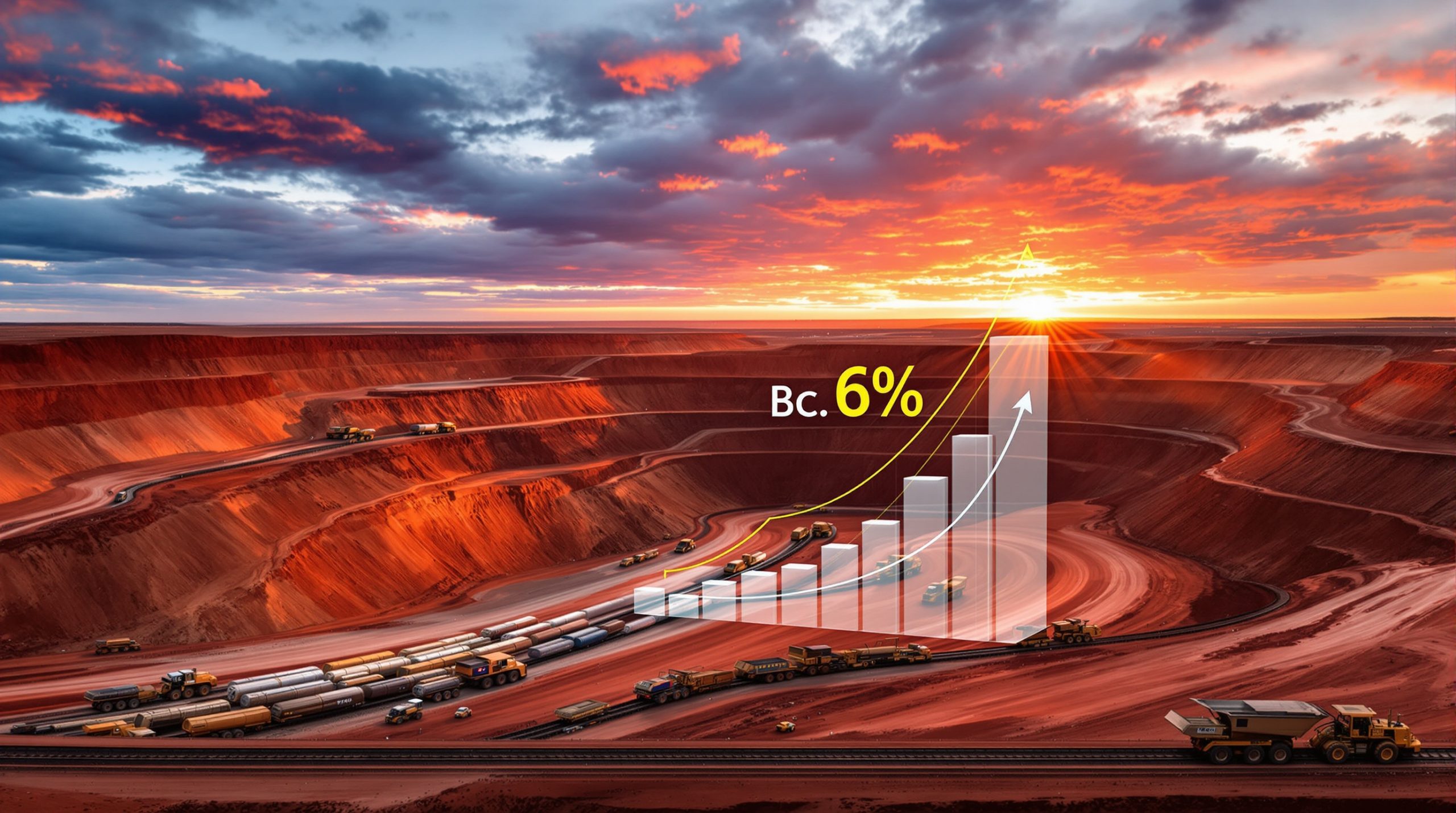What's Driving Central Banks to Buy Record Amounts of Gold?
In recent years, central banks worldwide have dramatically increased their gold purchases, transforming from net sellers to aggressive buyers. This shift represents one of the most significant changes in the global financial landscape, with profound implications for monetary policy, geopolitical power dynamics, and the future of currency systems.
Central banks have accumulated over 1,000 tonnes annually for three consecutive years, with 2023-2025 marking unprecedented levels of acquisition. According to the World Gold Council, central banks purchased 1,082 tonnes in 2022—the highest level since 1967—followed by 1,037 tonnes in 2023, and Q1 2024 alone saw 290 tonnes acquired.
This strategic pivot raises important questions about what's motivating these institutions to stockpile gold at such historic rates. Financial analysts note that this accumulation represents a structural shift in confidence in the existing monetary system rather than merely a cyclical trend.
How Did Central Banks Transform from Gold Sellers to Buyers?
The Historical Shift in Central Bank Strategy
For decades following the collapse of the Bretton Woods system in 1971, central banks were primarily gold sellers. Throughout the 1990s and early 2000s, many Western central banks reduced their gold reserves, considering them less relevant in the modern financial system.
Between 1999 and 2009, central banks sold approximately 4,000 tonnes of gold through the Central Bank Gold Agreements (CBGAs). The Washington Agreement on Gold (1999) limited central bank gold sales to 400 tonnes per year among signatories, highlighting the coordinated approach to reducing reserves.
The 2008 global financial crisis marked a turning point. Trust in traditional financial systems wavered, and central banks—particularly those in emerging economies—began reassessing gold's role in their reserves. By 2010, central banks collectively became net buyers of gold for the first time in decades.
This transition accelerated dramatically after 2020, when annual purchases surged beyond 1,000 tonnes—levels not seen since the gold standard era. The National Bank of Poland has emerged as a leading buyer, significantly increasing its holdings, while several emerging market central banks including Kazakhstan, Bulgaria, and El Salvador have also been active purchasers.
Why Are Central Banks Racing to Accumulate Gold?
Diversification in an Uncertain World
Central banks are increasingly viewing gold as essential for diversifying away from traditional currency reserves. With approximately 59% of global foreign exchange reserves held in US dollars as of Q4 2023—down from over 70% in the early 2000s—many nations are seeking to reduce this concentration risk.
"Gold provides a natural hedge against currency fluctuations," explains financial analyst Maria Chen. "Unlike fiat currencies, gold cannot be devalued through monetary policy decisions, giving central banks a reliable store of value during economic turbulence."
This diversification strategy has become particularly important as global debt levels have reached historic highs. Gold's negative correlation with the US dollar during periods of financial stress makes it an attractive counterbalance in reserve portfolios.
Protection Against Inflation and Currency Devaluation
The unprecedented monetary expansion following the COVID-19 pandemic triggered inflation concerns worldwide. Central banks have turned to gold as a traditional gold inflation hedge that maintains purchasing power when fiat currencies lose value.
Gold's performance during inflationary periods has historically been strong. During the high inflation of the 1970s, gold prices increased from approximately $40/oz in 1971 to $850/oz by January 1980—a stunning 2,025% increase. Similar patterns emerged during other inflationary episodes, including the 2008-2011 period when gold rose from around $800/oz to $1,900/oz during post-crisis monetary expansion.
This protective quality becomes increasingly valuable as central banks navigate the complex aftermath of pandemic-era monetary policies and their inflationary consequences.
How Does Geopolitical Tension Influence Gold Acquisition?
De-Dollarization and Strategic Independence
Geopolitical tensions have accelerated what many analysts call "de-dollarization"—the strategic reduction of US dollar dependence in international trade and reserves.
Countries facing sanctions risk or seeking greater monetary sovereignty have been particularly active gold buyers. Russia dramatically reduced its US Treasury holdings from approximately $100-150 billion in 2013 to under $10 billion by 2022, while increasing its gold reserves from approximately 400 tonnes in 2007 to over 2,300 tonnes today.
Similarly, China has steadily accumulated gold while developing alternative payment systems and promoting the internationalization of the yuan. China has reported consecutive months of gold purchases from November 2022 through May 2024, with official reserves reaching 2,264 tonnes as of September 2024—though many analysts believe actual holdings exceed official reports.
These moves reflect a broader desire to create financial systems less vulnerable to US influence.
The New Financial Architecture
The BRICS nations (Brazil, Russia, India, China, South Africa) and their expanding alliance have openly discussed creating alternative financial mechanisms, with gold potentially playing a central role.
Recent developments highlight this trend:
-
Saudi Arabia signing defense agreements with Pakistan, effectively placing it under China's security umbrella—a significant shift for a traditional US ally
-
BHP, Australia's mining giant, agreeing to accept 30% payment in Chinese renminbi for iron ore sales, creating new precedent for commodity transactions outside the dollar system
-
Switzerland's central bank shifting its reserves toward euros instead of dollars, now holding 39% in euros versus 37% in dollars
These moves suggest a gradual but meaningful realignment of the global financial order, with gold serving as both a bridge and a backstop during this transition.
What Impact Does Central Bank Buying Have on Gold Markets?
Price Dynamics and Market Influence
Central bank purchases have become a significant driver of gold prices analysis and market trends, creating a price floor and contributing to gold's strong performance despite rising interest rates in major economies.
"When central banks buy gold, they typically hold it long-term," notes commodity strategist James Wilson. "This removes substantial supply from the market while signaling confidence in gold to other investors."
The impact is magnified because central banks often buy during price dips, effectively providing support levels that prevent deeper corrections. Central banks typically view gold as a strategic asset rather than a trading vehicle, removing substantial supply from market circulation.
This pattern has helped gold maintain its upward trajectory despite periodic market volatility, with prices reaching all-time highs above $2,000/oz during 2020-2021 and continuing to perform strongly through 2025.
Supply Constraints and Production Challenges
Central bank demand has coincided with relatively flat mine production, creating supply pressure that further supports prices. Global gold mine production has struggled to grow significantly in recent years despite higher prices, with many major deposits already in production and new discoveries becoming increasingly rare and expensive to develop.
Production constraints include:
-
Geological Factors:
- Depletion of easily accessible, high-grade deposits
- Increasing depths of mining operations
- More complex metallurgy of remaining deposits
-
Regulatory/Environmental:
- Stricter environmental regulations in major producing countries
- Longer permitting timelines (often 7-10 years)
- Community opposition and social license challenges
-
Economic Factors:
- Rising energy costs
- Labor cost inflation
- Declining ore grades requiring processing of more material
These challenges have led to major producers like Newmont, Barrick Gold, and others reporting declining production profiles despite strong market incentives.
Which Central Banks Are Leading the Gold Buying Trend?
Emerging Market Leadership
While Western central banks have maintained relatively stable gold reserves, emerging market central banks have driven the buying surge:
-
China: Has reported increasing its gold reserves for 18 consecutive months through May 2024, with total reported reserves of 2,264 tonnes
-
Russia: Transformed its reserves from primarily dollar-based to heavily gold-weighted, now holding over 2,300 tonnes
-
Turkey: Significantly expanded gold holdings from approximately 116 tonnes in 2017 to over 540 tonnes by 2023, despite economic challenges including currency volatility
-
India: Steadily accumulated gold to diversify its substantial foreign exchange reserves, now holding approximately 800+ tonnes
-
Poland: Emerged as one of 2024-2025's largest buyers, continuing its multi-year acquisition strategy that has seen reserves grow from 103 tonnes in 2018 to over 330 tonnes
These purchases reflect a broader trend of economic power shifting from traditional Western financial centers to emerging economies, particularly in Asia.
Regional Patterns and Strategic Priorities
Central banks in regions with historical currency instability or geopolitical vulnerability have been particularly active buyers. Middle Eastern nations with substantial oil wealth have increased gold allocations, while Southeast Asian countries have steadily built reserves as economic insurance.
Emerging market central banks drove approximately 90% of net global official sector purchases in 2022-2023, with Asian central banks particularly active and Middle Eastern banks significantly increasing allocations.
These regional patterns reflect different strategic priorities:
- East Asian banks: Focus on reducing dollar dependence and supporting regional financial architecture
- Middle Eastern banks: Hedging against geopolitical instability and energy transition risks
- Central Asian banks: Building sovereign wealth independent of major power influences
- Eastern European banks: Increasing economic resilience against regional tensions
How Does Gold Strengthen Central Bank Credibility?
Public Trust and Monetary Stability
Gold holdings enhance central bank credibility by providing a physical, universally recognized asset backing a nation's currency and financial system. This tangible foundation becomes especially valuable during periods of financial stress or currency pressure.
"Central banks understand that gold represents financial sovereignty," explains monetary historian Dr. Thomas Reynolds. "A substantial gold reserve signals to markets and citizens alike that a nation's financial foundation extends beyond promises and digital entries."
This credibility factor explains why even economically challenged nations often prioritize maintaining or increasing gold reserves despite potential short-term liquidity needs. Turkey's continued acquisition despite significant economic challenges demonstrates this principle in action.
Crisis Preparation and Financial Resilience
The COVID-19 pandemic and subsequent economic disruptions demonstrated how quickly global systems can destabilize. Central banks have responded by strengthening their crisis preparation capabilities, with gold serving as a cornerstone of financial resilience planning.
Gold's ability to maintain value during market dislocations and its universal acceptability make it uniquely suited for emergency liquidity needs when normal financial channels may be disrupted.
During the 2020 market turmoil, gold once again demonstrated its value as a crisis hedge, reaching new record highs while many traditional assets experienced significant volatility.
What Does the Future Hold for Central Bank Gold Demand?
Projected Trends and Strategic Shifts
Analysts project continued strong central bank gold demand through 2025 and beyond, with several factors supporting this outlook:
- Persistent geopolitical tensions driving diversification needs
- Concerns about long-term inflation and currency stability
- The ongoing restructuring of the international monetary system
- Increasing recognition of gold's role in sustainable reserve management
While purchase volumes may fluctuate quarterly, the strategic shift toward higher gold allocations appears to be a long-term structural change rather than a cyclical phenomenon.
The transition from Western-dominated selling to emerging market-led buying represents a fundamental rebalancing of global economic influence and monetary priorities.
Potential Market Implications
Sustained central bank demand will likely provide long-term support for gold price forecast, potentially creating a higher price floor than historical averages would suggest. This could fundamentally alter investment calculations for both institutional and retail investors.
The impact extends beyond gold markets, potentially influencing:
- Currency valuations and exchange rate volatility
- Bond yields and interest rate expectations
- Broader asset allocation strategies as financial managers adjust
- Development of new financial instruments linked to gold
These effects ripple through the global financial system as market participants recalibrate to a world where central banks consistently accumulate gold.
How Should Investors Interpret Central Bank Gold Buying?
Strategic Considerations for Portfolio Management
For investors, central bank gold buying offers several important signals:
- Recognition of gold's enduring value by the world's most sophisticated financial institutions
- Potential long-term support for gold prices independent of inflation or interest rate cycles
- Indication of structural changes in the global monetary system that may affect all asset classes
These factors suggest that prudent investors should consider appropriate gold exposure as part of a diversified portfolio strategy, regardless of short-term price movements.
Market veterans recommend a balanced approach—particularly during periods of strong price appreciation. As experienced mining investor Jay Martin advises: "When the market gives you a gift like this… it's time to take your profits, derisk, and reallocate that capital somewhere more stable and wait for the next opportunity."
Beyond Price Speculation: Systemic Understanding
Rather than viewing central bank gold buying merely as a price catalyst, investors benefit from understanding the deeper systemic shifts it represents. The reemergence of gold as a central bank priority reflects fundamental reassessment of risk, value, and financial stability in a rapidly changing global landscape.
This perspective helps investors move beyond short-term price speculation to strategic positioning for long-term financial resilience. For those new to gold investing, focusing on quality and proven management teams becomes especially important during periods of gold market surge.
As markets heat up, the distinction between investments (companies with strong cash flows and operating businesses) and speculations (companies without cash flow that depend on future catalysts) becomes crucial for portfolio management.
Conclusion: Gold's Enduring Role in the Evolving Monetary Landscape
Central banks buying gold represents more than a cyclical trend—it signals a fundamental reassessment of gold's role in the global financial architecture. As monetary authorities navigate unprecedented challenges from geopolitical tensions to technological disruption, gold's unique properties as a non-sovereign, physically limited asset continue to provide stability and confidence.
The sustained accumulation by central banks across diverse economies suggests that gold will remain a cornerstone of monetary reserves even as financial systems evolve. For nations seeking financial sovereignty and investors pursuing long-term wealth preservation, gold's renaissance in central bank vaults offers a powerful reminder of its enduring relevance in an uncertain world.
As the global financial architecture undergoes its most significant transformation since the end of Bretton Woods, gold's role as both anchor and bridge between monetary systems ensures its continued significance for investment strategies in an increasingly multipolar economic landscape.
Ready to Capitalise on the Next Major Gold Discovery?
Stay ahead of the market with real-time alerts on significant ASX gold discoveries through Discovery Alert's proprietary Discovery IQ model, which instantly transforms complex mineral data into actionable insights. Visit our dedicated discoveries page to understand how major mineral discoveries have historically generated substantial returns for early investors.




